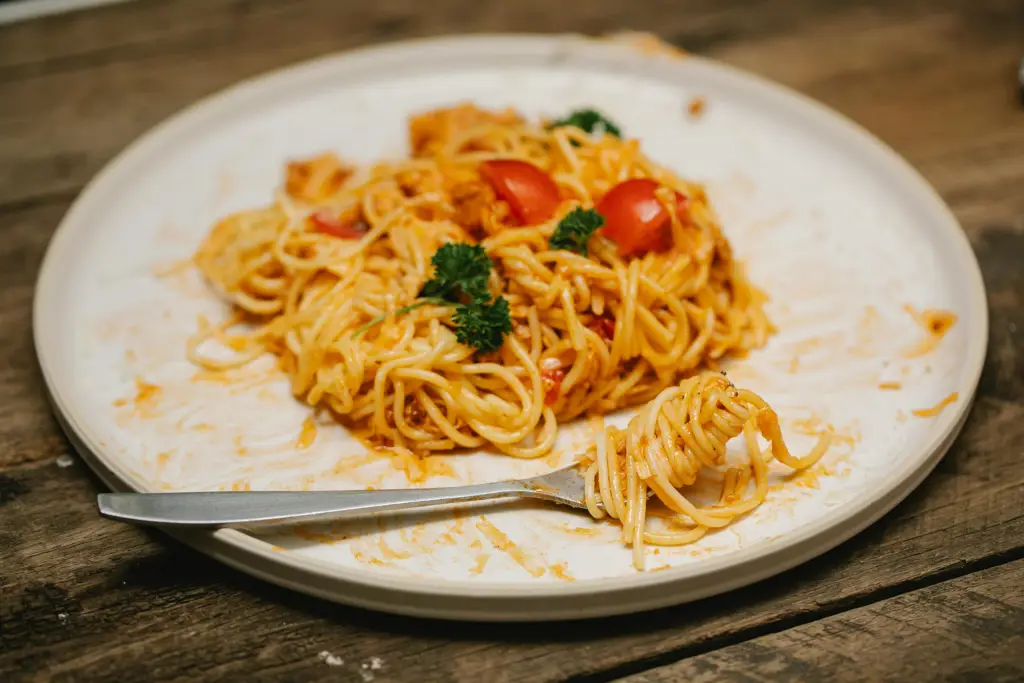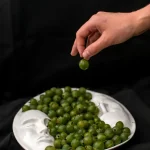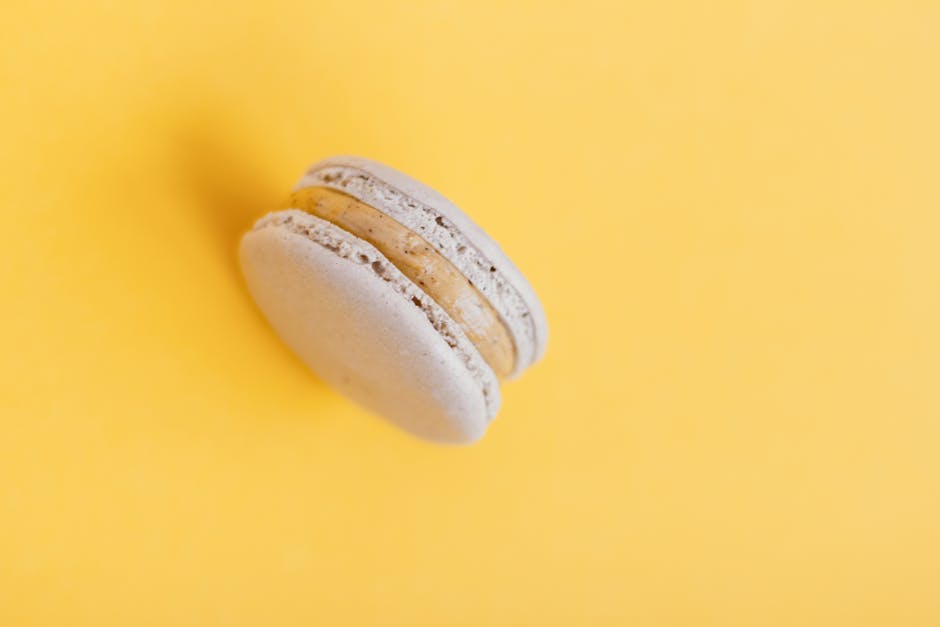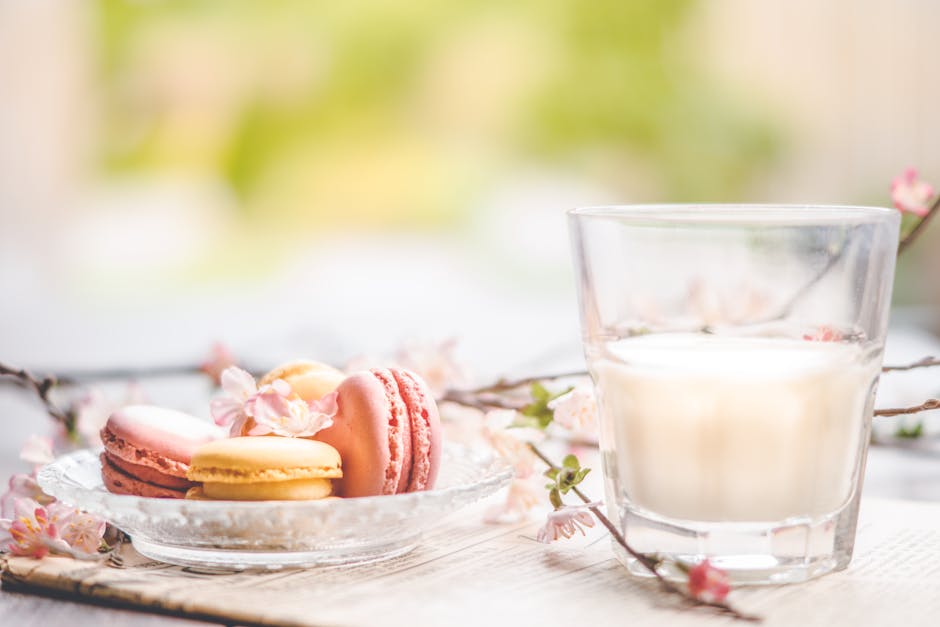Hollandaise sauce, a cornerstone of classic French cuisine, is a rich and decadent emulsion of butter, egg yolks, lemon juice, and seasonings. Its creamy texture and bright, tangy flavor make it a beloved accompaniment to a vast array of dishes, from asparagus and poached eggs to fish and vegetables. While its exact origins are shrouded in some culinary mystery, it’s widely believed to have emerged in France sometime during the 17th or 18th century, possibly even earlier, gaining popularity during the reign of Louis XIV. The name itself, “Hollandaise,” is somewhat misleading, as it doesn’t actually originate from the Netherlands, despite the name suggesting otherwise. The etymology remains debated, but one theory points to the sauce’s association with the luxurious lifestyle and culinary sophistication of the French aristocracy, who may have adopted the name to evoke a sense of exotic refinement.
Throughout history, Hollandaise sauce has held a position of prominence in high-end gastronomy. Its delicate balance of flavors and the technical skill required to create its smooth, stable emulsion have cemented its status as a benchmark of culinary expertise. The sauce’s preparation demands precision and patience, as even minor temperature fluctuations can cause the emulsion to break, resulting in a separated, oily mess. This inherent challenge has contributed to its mystique, making it a source of both admiration and apprehension for cooks of all skill levels. Indeed, a 2018 survey by a leading culinary school revealed that 42% of aspiring chefs cited Hollandaise as one of the most challenging sauces to master, highlighting the technical dexterity needed to achieve perfection.
The cultural significance of Hollandaise extends beyond its culinary merits. It is frequently associated with elegance and sophistication, often gracing the menus of fine-dining establishments and special occasions. Its presence on a plate can elevate a simple dish to a culinary experience, transforming breakfast staples like eggs Benedict into iconic brunch fare. Moreover, variations of Hollandaise, such as Béarnaise and Choron, have further expanded its reach and adaptability, demonstrating its versatility and enduring appeal. The sauce’s continued presence in contemporary cuisine, with chefs innovating and reinterpreting its classic form, speaks volumes about its timeless allure and enduring influence on the culinary world. From humble beginnings, possibly within the confines of a French chateau, Hollandaise has conquered the world, becoming a symbol of both refined taste and skillful execution.
Ingredients and Measurements
Creating a perfect hollandaise sauce hinges on precise measurements and the quality of your ingredients. Using fresh, high-quality ingredients will significantly impact the final flavor and texture. Don’t be tempted to substitute; each component plays a crucial role in achieving that rich, velvety emulsion.
Eggs: You’ll need three large egg yolks. The yolks are the emulsifying agents, binding the fat (butter) and water (lemon juice) together. Ensure your eggs are at room temperature. Cold yolks are far less likely to emulsify properly, leading to a broken sauce. Leaving them out at room temperature for about 30 minutes before starting is ideal.
Lemon Juice: Use 1 tablespoon of fresh lemon juice. This provides acidity, balancing the richness of the butter and adding a bright, citrusy note. Bottled lemon juice lacks the fresh, vibrant flavor of freshly squeezed juice, so it’s highly recommended to use freshly squeezed juice. The acidity also helps to stabilize the emulsion. Avoid using too much, as it can make the sauce too tart.
Water: A small amount of water helps to thin the sauce and prevent it from becoming too thick. Add 1 teaspoon of warm water. This helps to create a smoother, more fluid emulsion. The water should be warm, not hot, to prevent the eggs from scrambling.
Butter: Use 1 cup (2 sticks or 225g) of unsalted butter, clarified, or use high-quality unsalted butter. Clarified butter is ideal because it has a higher smoke point and contains less water, which can hinder the emulsification process. If using regular unsalted butter, make sure it is completely melted before adding it to the egg yolk mixture. The butter must be melted but not hot – it should be gently simmering, not bubbling vigorously. If the butter is too hot, it will cook the eggs and prevent the sauce from emulsifying correctly.
Salt and Pepper: Seasoning is crucial! Add a pinch of salt and freshly ground black pepper to taste once the sauce is finished. Start with a small amount and adjust to your preference. The salt enhances the flavors of the other ingredients, while the pepper adds a subtle warmth. Cayenne pepper or a dash of paprika can be added for a spicier hollandaise.
Optional additions: While these are not essential, you can enhance your hollandaise with additions such as a teaspoon of Dijon mustard for a tangy kick, a pinch of cayenne pepper for a little heat, or a few drops of Worcestershire sauce for a more complex flavor profile. Always add any optional ingredients after the sauce is fully emulsified to avoid disrupting the emulsion.
Important Note: Accurate measurements are key to a successful hollandaise. Using a kitchen scale for the butter and a measuring spoon for the lemon juice and water will ensure consistency and the best results.
Equipment Preparation
Making a flawless hollandaise sauce hinges not only on precise ingredients but also on properly prepared equipment. The right tools will ensure a smooth, emulsified sauce, free from lumps and curdling. Neglecting this crucial step can lead to a disastrous outcome, so take your time and follow these instructions carefully.
First, you’ll need a double boiler. This is essential for gently heating the egg yolks and butter without the risk of scrambling the eggs. If you don’t own a double boiler, you can improvise one using two stainless steel bowls: one slightly smaller than the other. Fill the larger bowl with about an inch of simmering water, ensuring the bottom of the smaller bowl doesn’t touch the water. The water should remain at a gentle simmer throughout the process – never let it boil vigorously.
Next, gather your whisks. You’ll need two whisks: a small whisk for incorporating the egg yolks and lemon juice, and a larger whisk for emulsifying the butter into the yolk mixture. A balloon whisk is ideal for its larger surface area, allowing for efficient incorporation of the butter. Ensure both whisks are clean and completely dry. Any trace of water can break the emulsion and ruin the sauce.
Accurate measurement is paramount. You’ll need a small, accurately calibrated measuring cup (ideally a liquid measuring cup with a spout) for measuring the lemon juice and melted butter. A set of measuring spoons will be needed for the salt and cayenne pepper. Use a digital kitchen scale for precise measurement of the egg yolks if you prefer, although volume measurement is acceptable for home cooks.
Prepare your butter in advance. Cut 1 cup (2 sticks) of high-quality, unsalted butter into small, roughly 1/2-inch cubes. This ensures the butter melts evenly and incorporates smoothly into the sauce. Place the cubed butter into a heatproof bowl or container, ready to be added to the double boiler setup. Cold butter is crucial for a successful emulsion; if your butter is softened or melted, it will hinder the emulsification process.
Finally, choose a suitable serving vessel. A small, warmed bowl or a warmed sauce boat will keep the hollandaise warm and prevent it from cooling and thickening too quickly. Warming the bowl can be done by placing it over a pan of simmering water for a few minutes before serving. Never use a metallic bowl for warming as this can affect the sauce’s taste and consistency.
Having all your equipment ready and properly prepared before you begin will not only save you time but also contribute significantly to the success of your hollandaise sauce. Take the time to organize your workspace and ensure everything is within easy reach to avoid any interruptions during the delicate emulsification process.
Egg Preparation: The Foundation of a Great Hollandaise
The success of your hollandaise sauce hinges entirely on the proper preparation of the eggs. This seemingly simple step requires precision and attention to detail. We’ll be using only the egg yolks for this recipe, as the whites are not needed and can even hinder the emulsification process. Start with fresh, high-quality eggs; older eggs tend to be less effective at creating a stable emulsion.
Begin by separating 4 large eggs. Crack each egg carefully into a separate small bowl to avoid accidentally introducing any egg white into the yolks. Even a tiny bit of egg white can prevent the sauce from thickening properly. If you accidentally get some egg white in, carefully remove it with a clean spoon – the goal is pristine yolks.
Once you’ve successfully separated the yolks, you’ll need to warm them gently. This is crucial for several reasons. First, warming the yolks helps to prevent them from scrambling during the emulsification process. Second, warmer yolks emulsify more easily with the melted butter, resulting in a smoother, richer sauce. Third, warming the yolks helps to slightly thicken them, creating a better base for the emulsion.
There are several methods for warming the yolks, each with its own advantages. You can use a double boiler, a heat-safe bowl set over a pan of simmering water, or even a microwave. The double boiler method is generally preferred for its gentle, even heat distribution. Fill a saucepan with about an inch of water, bring it to a simmer, and then place a heat-safe bowl on top, ensuring the bottom of the bowl doesn’t touch the water. Add the 4 egg yolks to the bowl.
Whisking constantly is key. Use a whisk to continuously stir the egg yolks as they sit over the simmering water. This prevents scorching and ensures even heating. The yolks should become noticeably warmer and slightly thicker, taking about 5-7 minutes. The temperature should reach approximately 140°F (60°C) – you can use a thermometer to monitor the temperature accurately. Don’t let the yolks get too hot, as this can lead to scrambling and ruin the sauce. The consistency should be creamy and slightly thicker than raw egg yolks.
Avoid any direct heat contact. If using the microwave method, warm in short bursts (10-15 seconds at a time), stirring frequently to prevent uneven heating and scrambling. Remember that the goal is to gently warm the yolks, not cook them. Once warmed, remove the bowl from the heat and set aside. Your perfectly prepared egg yolks are now ready for the next crucial step: incorporating the melted butter.
Proper egg preparation is the foundation for a flawless hollandaise. Taking your time and following these steps carefully will ensure that your sauce is rich, creamy, and utterly delicious.
Sauce Preparation (Melting Butter, Whisking Yolks)
This section details the crucial first steps in creating a perfect classic hollandaise sauce: melting the butter and whisking the egg yolks. Precision and technique are key to achieving a smooth, emulsified sauce, so pay close attention to the details.
Begin by preparing your bain-marie. Fill a saucepan with about an inch of simmering water. The water should be gently simmering, not boiling vigorously. A vigorous boil will cook the eggs too quickly, resulting in scrambled eggs instead of a smooth sauce. Avoid letting the bottom of the top bowl touch the water; the heat needs to be gentle and indirect.
In a heatproof bowl that fits snugly over the saucepan (without touching the water), place 3 large egg yolks. Use only fresh, high-quality eggs; older eggs are less likely to emulsify properly. Add 1 tablespoon of lemon juice (freshly squeezed is best) and a pinch of cayenne pepper (optional, but adds a nice touch). The lemon juice helps to stabilize the emulsion and adds a bright, fresh flavor.
Using a whisk, whisk the egg yolks, lemon juice, and cayenne pepper vigorously until the mixture is pale and slightly thickened. This should take about 2-3 minutes. The goal is to create a ribbon-like consistency; the mixture should coat the back of the whisk smoothly. This process incorporates air into the yolks, helping to create a lighter, airier sauce.
While whisking constantly, gradually increase the heat under the bain-marie to maintain a gentle simmer. Continue whisking continuously – this is crucial for preventing the eggs from scrambling. The mixture will slowly begin to thicken, becoming lighter in color and more voluminous.
Meanwhile, prepare the clarified butter. In a small saucepan, melt 1 cup (2 sticks) of unsalted butter over low heat. Once melted, remove from the heat and let it sit undisturbed for a few minutes to allow any milk solids to settle to the bottom. Carefully pour the clear, golden butter (leaving the milky solids behind) into a separate container. Avoid pouring the milky solids into your sauce, as these can cause it to curdle.
Now, the most important part: slowly drizzle the clarified butter into the whisked egg yolk mixture in a thin, steady stream, while continuing to whisk vigorously. Whisking constantly ensures that the butter emulsifies properly with the egg yolks, creating a smooth, thick sauce. If the sauce starts to look grainy or separate, don’t panic! Continue whisking vigorously; it will usually come back together. If it doesn’t, you may need to start again.
Once all the butter has been incorporated and the sauce is thick, glossy, and has a luxurious consistency, remove the bowl from the bain-marie. Season to taste with salt and freshly ground white pepper. Your hollandaise sauce base is now ready for the next step!
Emulsification Process: The Heart of Hollandaise
The emulsification process is the crucial step in making a successful hollandaise sauce. It involves combining melted butter into a base of egg yolks and lemon juice, creating a stable emulsion where the fat (butter) is finely dispersed throughout the water-based liquid (egg yolks and lemon juice). Failure to properly emulsify will result in a broken sauce, separating into oily butter and watery yolks.
Begin with a double boiler or a heatproof bowl set over a pan of simmering water. The water should be barely simmering; avoid direct heat, which can easily scramble the eggs. Ensure the bottom of the bowl doesn’t touch the water. This gentle, indirect heat is essential for gradually warming the egg yolks and preventing curdling.
In the heatproof bowl, whisk together 3 large egg yolks and 1 tablespoon of fresh lemon juice. Use a good quality whisk for optimal blending. Whisk vigorously and continuously until the mixture is pale yellow and slightly thickened. This takes about 2-3 minutes. The mixture should resemble a light ribbon when you lift the whisk. This step warms the yolks gently and helps them to emulsify more readily.
Next comes the butter. You’ll need 1 cup (2 sticks or 225g) of unsalted butter, melted and clarified. Clarifying butter removes milk solids which can hinder emulsification. To clarify, melt the butter gently over low heat. Once melted, let it sit undisturbed for a few minutes. Then, carefully pour off the clear, golden butter, leaving the milky solids behind. This yields a purer fat that emulsifies better and creates a richer, smoother sauce.
Gradually drizzle the clarified, melted butter into the egg yolk mixture in a slow, steady stream. Continue whisking constantly and vigorously. This is the most critical part of the process. The slow addition of butter allows the egg yolks to gradually incorporate the fat, creating a stable emulsion. If you add the butter too quickly, the emulsion will break.
Maintain a consistent whisking motion throughout the entire process. Don’t stop whisking, even for a second. As the butter is incorporated, the sauce will begin to thicken and become glossy. If the sauce starts to look grainy or curdled, you may have added the butter too quickly. In this case, try whisking vigorously for a few more minutes; sometimes this can rescue a slightly broken emulsion.
Once all the butter is incorporated, the hollandaise should be thick, glossy, and have a velvety texture. Season with salt and freshly ground white pepper to taste. Taste and adjust seasoning as needed, adding a touch more lemon juice for brightness if desired. Keep the sauce warm over the simmering water, but avoid overcooking, which can cause it to curdle.
If, despite your best efforts, the sauce breaks, don’t despair! Sometimes, even experienced cooks encounter this issue. Try whisking in a tablespoon or two of very hot water, one drop at a time, while whisking vigorously. This can sometimes help re-emulsify the sauce. However, a completely broken sauce is usually best discarded and started again.
Seasoning and Adjustment
Seasoning your hollandaise sauce is crucial to achieving its signature rich and tangy flavor profile. It’s a delicate balance, and adjusting the seasoning requires patience and attention to detail. Don’t rush this step; the final taste will greatly depend on your careful adjustments.
Begin by tasting your sauce after it has been fully emulsified and is smooth and glossy. Start with a conservative amount of salt and freshly ground white pepper. I recommend adding 1/4 teaspoon of salt and a generous pinch (about 1/8 teaspoon) of white pepper initially. White pepper is preferred as its subtle flavor doesn’t overpower the delicate egg yolk and butter flavor. Stir gently to incorporate the seasonings, ensuring even distribution throughout the sauce.
Taste again. The salt should be noticeable but not overpowering. If it’s too bland, add another 1/8 teaspoon of salt and taste again. Repeat this process until the salt level is to your liking. Remember, it’s always easier to add more salt than to take it away.
Next, assess the acidity. Hollandaise sauce should have a pleasant tang, not a sharp, vinegary bite. If the sauce is too rich or lacks brightness, add a touch of lemon juice, starting with just 1/2 teaspoon. Stir gently and taste. You may need to add another 1/4 to 1/2 teaspoon, depending on your preference and the acidity of your lemons. Freshly squeezed lemon juice is always recommended over bottled juice for its superior flavor.
Consider adding a touch of cayenne pepper for a subtle kick. A pinch (less than 1/8 teaspoon) is often enough to add a pleasant warmth without overpowering the other flavors. This is entirely optional, but many chefs appreciate the nuanced complexity it brings. If using, add it along with the salt and pepper initially.
Temperature is key during seasoning. The sauce should be warm but not hot. If it becomes too hot, the emulsion may break. If this happens, whisk in a teaspoon of warm water slowly to try and re-emulsify it. If the sauce is too cool, it may become thick and difficult to adjust. A double boiler or a warm bowl set over a pan of simmering water is ideal for maintaining the correct temperature.
Finally, always taste your hollandaise sauce before serving. Even after careful seasoning, a final taste check ensures perfection. Make any necessary final adjustments to the salt, lemon juice, or pepper to reach your desired flavor profile. Remember that taste preferences vary, so don’t hesitate to adjust to your own liking. The goal is a balanced and delicious sauce that complements your dish beautifully.
Recommendations for Classic Hollandaise Sauce
This classic hollandaise sauce is best enjoyed immediately after preparation for optimal flavor and texture. However, if you need to prepare it ahead of time, proper storage is crucial to maintain its quality. For best results, store the sauce in an airtight container in the refrigerator for up to 2 days. Do not freeze hollandaise, as freezing will drastically alter its texture and flavor.
When reheating leftover hollandaise, avoid direct heat as this can cause the sauce to curdle. Instead, gently warm it in a double boiler or by placing the container in a bowl of warm water. Stir frequently to ensure even heating and prevent separation. If the sauce does separate, whisk in a teaspoon of warm water or lemon juice to help it emulsify again. Always taste and adjust seasoning before serving.
The richness of hollandaise sauce lends itself beautifully to a variety of dishes. It’s a timeless accompaniment to classic dishes like poached eggs (Eggs Benedict, anyone?), asparagus, and grilled fish. Its velvety texture pairs exceptionally well with the delicate flavors of steamed vegetables such as broccoli or green beans. Consider drizzling it over roasted vegetables for an extra layer of richness and sophistication. Experiment with different proteins; it also works wonderfully with grilled chicken or even a simple piece of pan-fried salmon.
For a truly luxurious brunch experience, serve your hollandaise over Eggs Benedict. The combination of perfectly poached eggs, crispy Canadian bacon, and the rich sauce is a culinary masterpiece. Alternatively, for a lighter meal, try it as a sauce for grilled or steamed vegetables. The richness of the sauce complements the fresh and slightly bitter notes of asparagus or the sweetness of roasted carrots. For a unique twist, use it as a dipping sauce for roasted vegetables, offering a sophisticated alternative to traditional dips.
Serving suggestions extend beyond the classic pairings. Consider using hollandaise as a decadent topping for omelets or frittatas, adding a layer of indulgence to these breakfast staples. It can also be incorporated into pasta sauces for a creamy, luxurious twist. Remember to always serve hollandaise at room temperature or slightly warm for the best flavor and texture. Avoid serving it cold, as this will affect its creamy consistency.
Nutritional Information (per serving, approximate): The nutritional content of hollandaise sauce can vary depending on the specific recipe and ingredients used. However, a typical serving (approximately 2 tablespoons) will contain roughly 150-200 calories, with a high fat content (primarily from butter and egg yolks). It is relatively low in carbohydrates and protein. This sauce should be consumed in moderation due to its high calorie and fat content.
Important Note: Always use fresh, high-quality ingredients for the best results. The quality of your eggs and butter will significantly impact the overall taste and texture of your hollandaise sauce. Pay attention to the temperature of your ingredients throughout the process, as this is key to preventing curdling.





